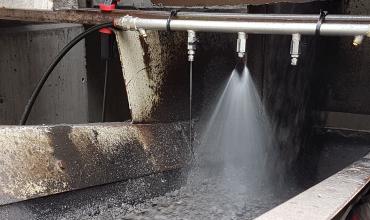Re-RACE Project: Rejuvenation of Reclaimed Asphalt in a Circular Economy
Project
In Belgium, the reuse of reclaimed asphalt (RA) has been applied for more than forty years already, making our country one of the pioneers in Europe and, by extension, worldwide. The ecological and financial advantages of reusing asphalt are, of course, the main reasons for this. This success means that the sector is currently facing - and will be even more so in the near future - the problem of multiple recycling. If asphalt reuse (without loss of performance) is to continue to be applied sustainably or, ideally, to be increased, the addition of additives, especially rejuvenators, is necessary.
With the pre-normative Re-RACE Project, BRRC aims to gain knowledge on the functioning of rejuvenators and their effect on the performance of the binder and the asphalt mix in order to enable a higher rate of reuse of asphalt mixes or multiple recycling without loss of performance, also in surface courses. This project is part of a desire to move towards a circular economy, also in the asphalt sector.
Project development: three task packages
In 2019, we studied the functioning of rejuvenators in RA and their effect on the performance of the binder and asphalt mixes. We presented the results, among others, in papers at the 7th Eurasphalt & Eurobitume Congress.
The BRRC Working Group Steering Committee Reclaimed Asphalt is also investigating the reuse of RA in APT-C type surface courses. In addition, we are working on the development and validation of a test to assess the workability of APT-C type asphalt mixtures containing RA.
The range of rejuvenators currently marketed by suppliers is wide. To get a clearer picture of all these offers, we have conducted a critical analysis of these rejuvenators by categorising them into groups according to the following elements:
- origin and production process;
- chemical composition;
- action – working mechanism;
- availability and practical experience;
- health safety and environment (HSE) and sustainability aspects such as emissions and leaching.
This categorisation of rejuvenators and the analysis are illustrated by some examples of each group in BRRC Dossier 21.
In order to obtain an objective assessment of the sustainability of the use of rejuvenators for the reuse of RA and its effect according to the percentage of RA applied in asphalt mixes for surface courses, the methodology of CEDR's EDGAR project (Evaluation and Decision process for Greener Asphalt Roads) was adopted.

